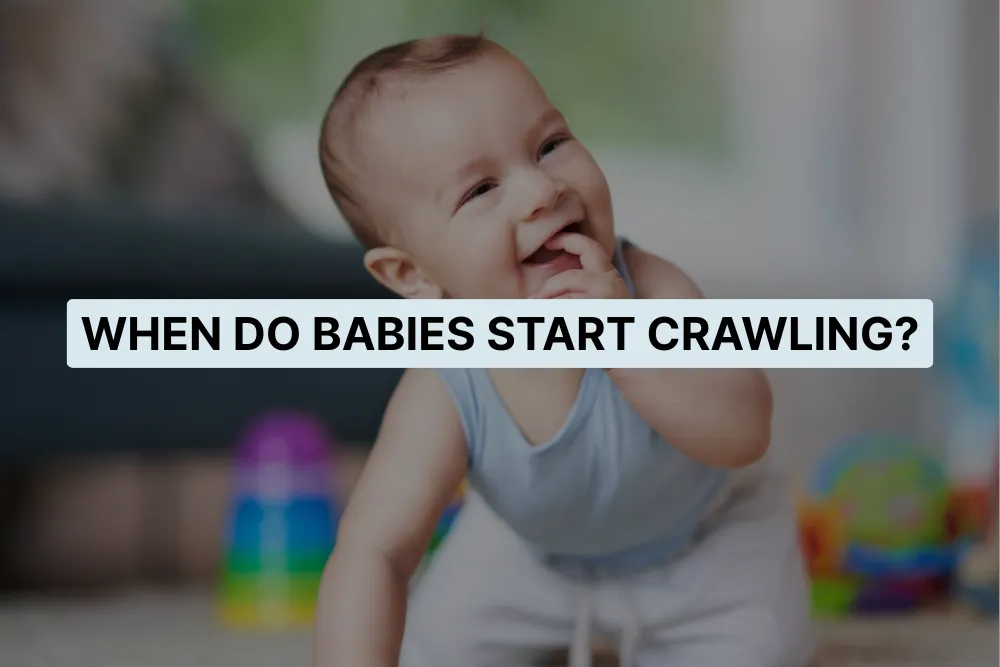One of the most exciting moments in early parenthood is watching your baby crawl for the first time. But naturally, questions come with it: When do babies start crawling? What age should my baby crawl? What if they don’t crawl at all?
As physiotherapists, we often hear these concerns from parents, especially first-timers. Crawling is a key developmental milestone that supports strength, coordination, and even brain development. In this guide, we’ll walk you through everything you need to know about baby crawling, when it happens, how to support it, and when to seek help.
What Age Do Babies Start Crawling?
Most babies start crawling between 6 and 10 months of age. However, this timeline can vary significantly from child to child. Some babies may begin crawling as early as 4 months, while others might not crawl until 11 months or later.
Crawling is a motor skill that relies on muscle strength, balance, and coordination. It typically follows other key milestones like tummy time, rolling, and sitting without support.
Can Babies Crawl at 4 or 6 Months?
Yes, but it may look different than what you expect.
- At 4 months, babies may begin showing early signs like pushing up during tummy time or moving their legs like they’re “preparing” to crawl.
- By 6 months, some babies might start army crawling by pulling themselves forward with their arms while their tummy stays on the floor.
While these early movements are encouraging, full-on crawling usually develops closer to the 7–10 month range.
Signs Your Baby is Getting Ready to Crawl
Before crawling begins, there are often some clear signs that your baby is preparing for it. These include:
- Pushing up on arms during tummy time
- Rocking back and forth on hands and knees
- Pivoting or spinning in a circle on their tummy
- Pushing backward before figuring out how to go forward
- Strong head and trunk control
These signs indicate your baby is developing the core stability and motor control needed to crawl.
Types of Crawling (Yes, There Are Many!)
Not all babies crawl the same way. Here are a few common styles:
- Classic Crawl (Cross-Crawl): Alternating hands and knees — the textbook version.
- Army Crawl: Baby drags themselves with arms while belly stays on the ground.
- Bear Crawl: Hands and feet on the floor, with hips high up.
- Bottom Scoot: Baby moves by shuffling their bottom across the floor.
- Crab Crawl / Sidewinder: Baby pushes off unevenly and moves sideways.
Tip: While all crawling styles are acceptable, persistent scooting or one-sided movement might indicate a muscle imbalance or developmental delay. This is something a pediatric physiotherapist can assess.
How to Teach Baby to Crawl
Parents play a big role in encouraging crawling. Here’s how to support your baby’s progress:
1. Tummy Time Is Non-Negotiable
Start from birth (a few minutes a day) and gradually increase. Tummy time builds neck, shoulder, and core strength.
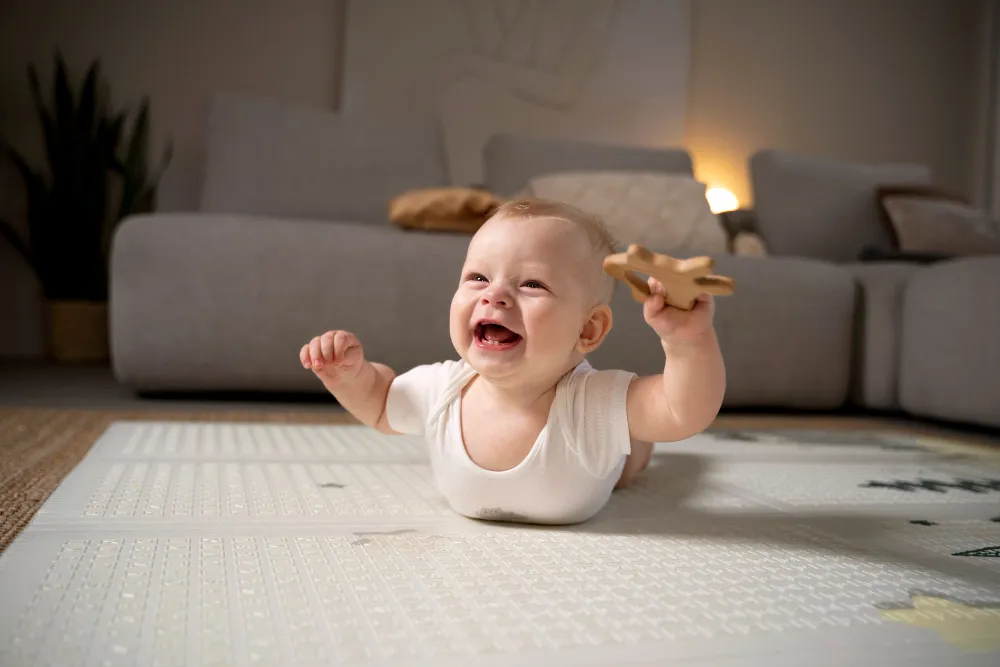
2. Create a Safe Floor Space
Allow free movement on a soft but firm surface (avoid too many cushions, walkers, or activity chairs).

3. Motivate with Toys
Place toys just out of reach to encourage forward movement. Use mirrors, colorful objects, or even your face to get them excited.
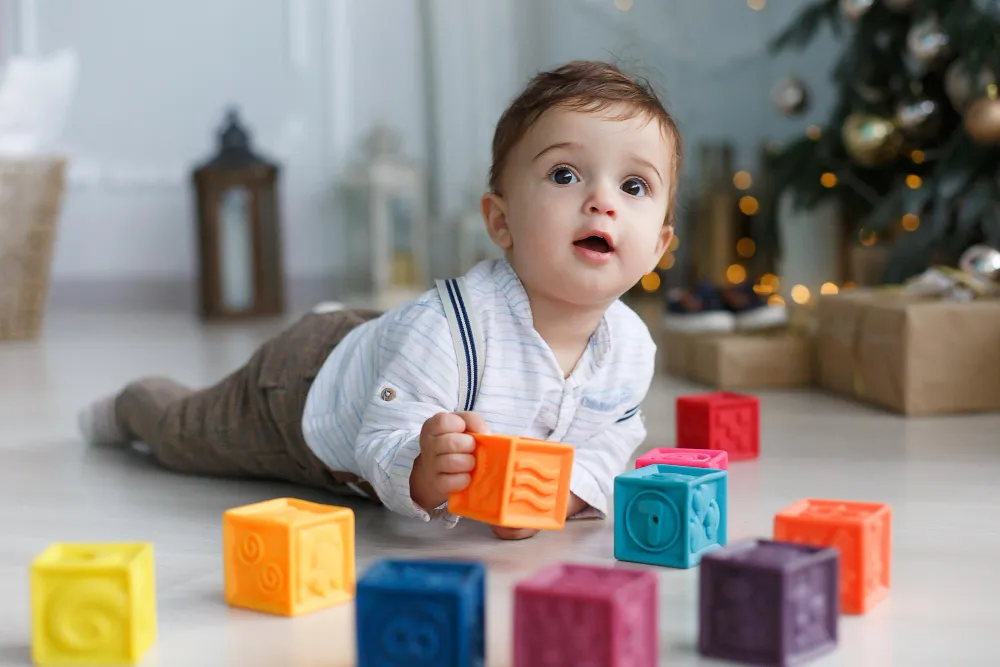
4. Use the “Tunnel Trick”
Hold your arms like a tunnel or place a short object they can crawl under. This encourages forward crawling and improves coordination.
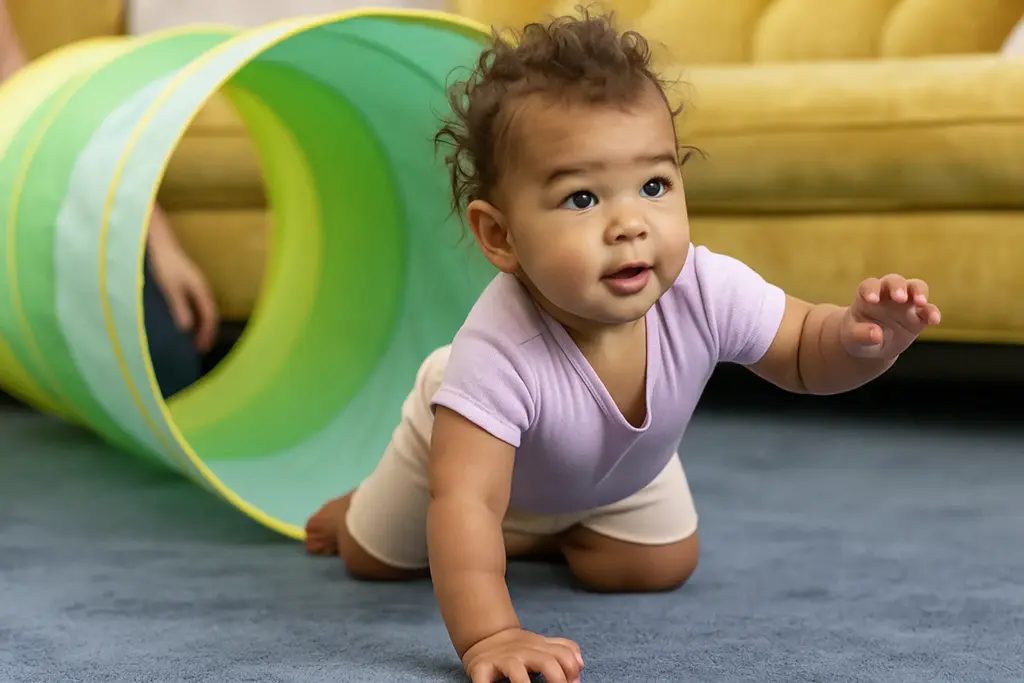
5. Practice on All Fours
Gently place your baby in a crawling position and rock their body back and forth — this builds neuromuscular memory.
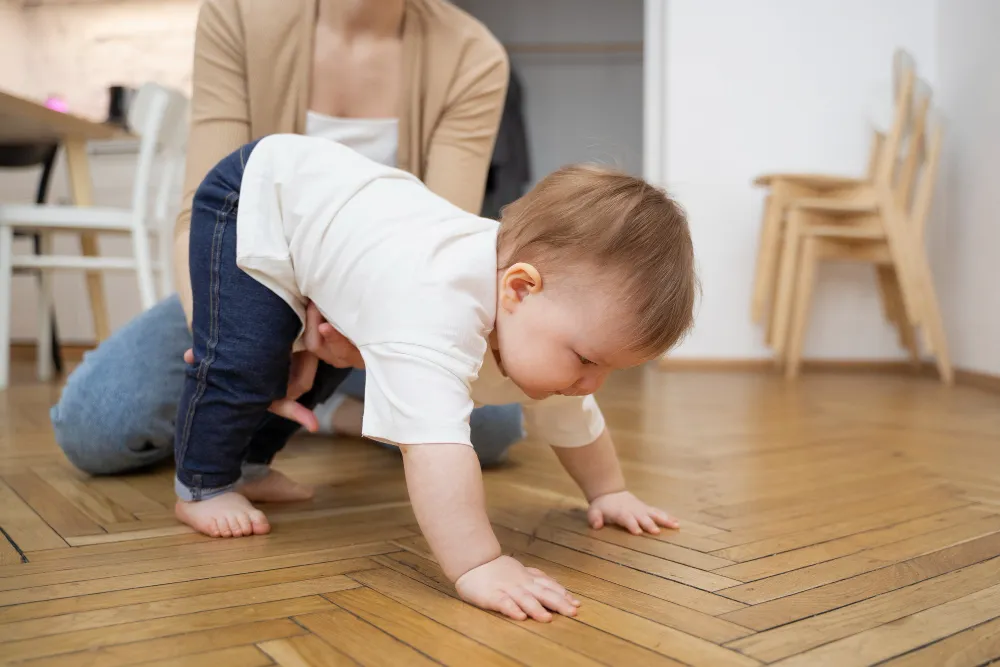
What If My Baby Isn’t Crawling Yet?
If your baby hasn’t started crawling by 10 to 11 months, it’s a good idea to consult your pediatrician or a physiotherapist. According to Parent Data, around 5% to 15% of children may skip crawling altogether and transition directly from sitting to standing or walking.
While skipping crawling can be normal, it’s important to monitor your baby’s overall motor development, balance, and coordination.
You should consult a physiotherapist if:
- Your baby is not moving at all by 10 months
- Your baby uses only one side of their body to move
- Your baby has very low muscle tone or stiffness
- They dislike being on their tummy despite encouragement
- They’re not showing interest in reaching or moving toward objects
How Physiotherapists Help with Crawling
A pediatric physiotherapist can:
- Evaluate your baby’s gross motor development
- Identify any red flags for movement disorders
- Provide customized baby exercises for crawling
- Teach parents safe handling and play techniques
- Track progress and adjust developmental goals
Conclusion
Every baby develops at their own pace. Crawling is just one part of a broader journey of movement and exploration. The key is to provide a safe, engaging environment and encourage natural development. And if you’re ever unsure, your physiotherapist is just a call away.
References
- Centers for Disease Control and Prevention. Important Milestones: Your Baby by Six Months. (CDC link)
- Adolph, K. E., & Berger, S. E. (2006). Motor Development. In D. Kuhn, R. S. Siegler, W. Damon, & R. M. Lerner (Eds.), Handbook of child psychology: Cognition, perception, and language (6th ed., pp. 161–213). John Wiley & Sons, Inc..
- Hewitt, L., et al. (2020). Tummy time and infant health outcomes: a systematic review. Pediatrics, 145(6). (https://doi.org/10.1542/peds.2019-2168)
- Campos, J. J., et al. (2000). Travel broadens the mind. Infancy, 1(2), 149–219.
- Novak, I., et al. (2013). A systematic review of interventions for children with cerebral palsy. Dev Med Child Neurol, 55(10), 885–910.

Amit Saraswat is the Founder of Physioveda Medical Center, a Dubai-based clinic focused on personalized physiotherapy and integrative healthcare. With a passion for patient-centric solutions, he leads the vision behind Physioveda’s evidence-based approach to pain relief and long-term recovery.

